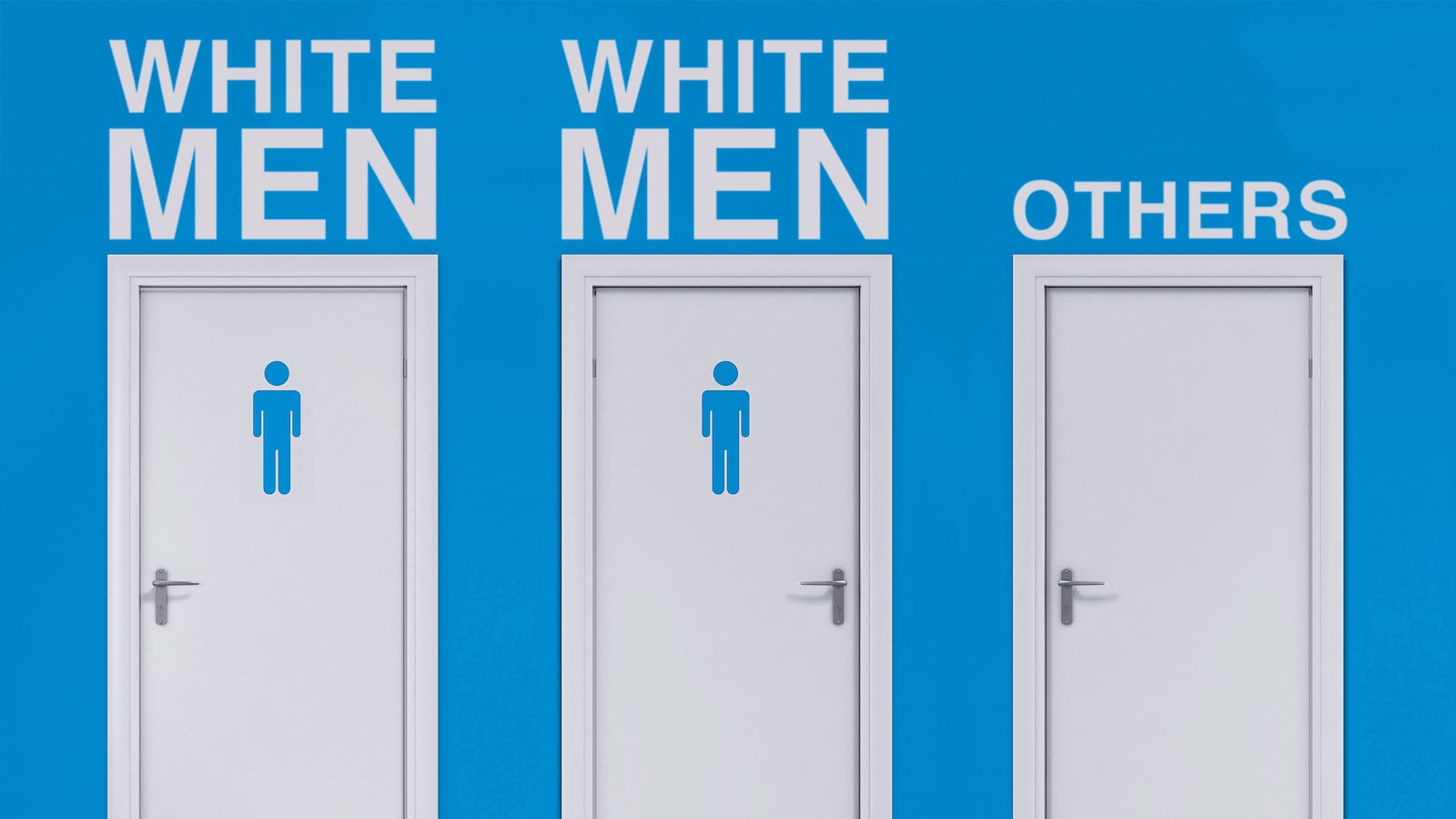America’s largest independent retailer of photographic equipment is being sued by the feds for racial and gender discrimination so bad it even allegedly forces minorities to use separate bathrooms.
The Department of Labor slapped B&H Photo Video with a civil lawsuit last week, detailing 15 alleged counts of racial and gender discrimination. The suit comes in addition to a fine from the Occupational Safety and Health Administration, and a series of damning testimonies from B&H’s recently unionized workers.
While most customers only ever see the B&H’s two-floor Manhattan store, the company leads a considerably larger operation out of its warehouse spaces below the store and two in Brooklyn. There, employees say Hispanic workers were employed to do most of the manual labor, while white employees were promoted or hired to higher positions.
“The facility’s workforce is divided along racial lines, with management, supervisory, and mid-level positions filled predominantly by white men,” the Department of Labor wrote in its suit.
This federal lawsuit is one half of B&H’s current legal troubles. In a protracted battle for union status, members the company’s Hispanic staff say B&H used intimidation tactics, even firing the entire cleaning department when workers attempted collective bargaining.
Rosanna Rodriguez, a spokesperson for pro-labor group the Laundry Workers Center, says B&H dismissed all seven of its cleaning workers after they asked for increased wages last month.
“Why are you going to fire people who have been working for you for 15 years and hire new workers? That’s what they’re doing right now,” Rodriguez told The Daily Beast. “It’s clear intimidation and retaliation against workers.”
Reached by phone, B&H spokesperson Henry Posner denied that the firings had been in retaliation for the workers’ union effort.
But the timing of mass firing is suspicious, Rodriguez says. B&H dismissed the entire cleaning staff the same day as workers in the Manhattan warehouse successfully voted to form their own union.
“They expressed an interest to increase their salary, to be treated with more respect, and to join the union,” Rodriguez said. “These are people with seniority of 14, 15, 16 years working for B&H. It’s no coincidence that the same day the workers won their election, B&H decided to eliminate the [cleaning] department and fire everyone.”
The fired workers also accused B&H of hostile treatment, one in a series of allegations that depict a company divided along racial lines.
This segregated workforce was in full force in the B&H’s Brooklyn Navy Yard warehouse where, according to the Department of Labor, the company hired approximately 100 “Hispanic individuals,” and not a single black or Asian worker. B&H did not hire any women, the suit alleges—and even if they had been hired, women would have found an unfriendly work environment. The warehouse lacked women’s bathrooms and changing rooms, the Labor Department said.
B&H’s bathroom woes also extended to male workers.
“The offensive conditions pervaded the workplace where Hispanic warehouse workers had unequal access to basic hygienic restroom facilities,” the lawsuit reads. “Hispanic workers had no option but to use unsanitary and often inoperable restrooms, which were separate and apart from superior restrooms used by white warehouse workers.”
B&H has categorically denied any bathroom-related discrimination.
“The allegations you have been hearing about are largely made by people who have never set foot in a B&H facility,” the store wrote in a statement. “For the time being, we will address several of the accusations, as they are far from factual. We can declare outright that B&H does NOT have any segregated bathrooms by race or religion, and anyone working at B&H knows that to be true. Additionally, any similar contentions are not only inaccurate, but bizarre.”
But some former employees say B&H is still discriminating.
Beginning last Autumn, B&H’s warehouse workers began a push to unionize, citing unfair wages, verbal abuse, and dangerous work conditions including a factory fire during which employees were not allowed to leave the warehouse.
“There was a ton of smoke, but we continued working, even when the room filled with smoke,” B&H employee Baltizar Martinez said in a statement on the September warehouse fire. “When we were finally allowed to leave, we had to go through the metal detectors. This process lasted for a half hour. When we got outside, there were 50 firefighters and a helicopter, and imagine! We had been inside, working, this whole time.”
Other warehouse workers complained that the company scheduled them for long and erratic hours without legally required rest breaks, that they were expected to move dangerously large pallets without proper training, and that air in the warehouse was hot and dust-laden.
“My nose bleeds two or three times a day sometimes,” Silverio Cano, another B&H warehouse employee said in a statement during an October unionization push. “I went to the doctor, and she told me that the nosebleeds were caused by the dust in the warehouse.”
These claims, initially dismissed by B&H spokespeople, were vindicated this year when OSHA fined the company $32,000 fine for unsafe workplace conditions. The OSHA inspection, obtained by art news site Hyperallergic, found B&H employees’ complaints from months before: boxes stacked dangerously high, disregard for fire safety code, and lack of guardrails on elevated platforms where employees work.
B&H’s latest lawsuit from the Department of Labor might improve conditions for the Brooklyn and Manhattan warehouse workers, who unionized in November and February, respectively. But three previous discrimination lawsuits spread over nearly a decade suggest that workplace equality may not be easy.
In 2011, two Hispanic workers sued the company over its alleged failure to promote and issue pay raises to people of color. In 2009, four female employees sued B&H, claiming that the company’s Hasidic Jewish managers refused to promote women to sales positions for “religious reasons.” In 2007, B&H to paid a $4.3 million settlement after the U.S. Equal Employment Opportunity Commission accused the company of discriminating against Hispanic employees.
“We commend B & H for working cooperatively with us to resolve this matter without protracted litigation,” EEOC attorney Louis Graziano said after the 2007 suit. “We encourage other employers to follow B & H’s example of resolving this case expeditiously and in good faith.”
But nine years later, facing similar accusations from two separate federal agencies, B&H maintains that it treats employees equally.
“Every one of our employees is treated with respect and dignity, no matter of race, religion or gender,” the company wrote on its website. “Our employees are well compensated, offered generous benefits, and they are given 17 paid days off in addition to three weeks paid vacation. Few companies offer this.”






